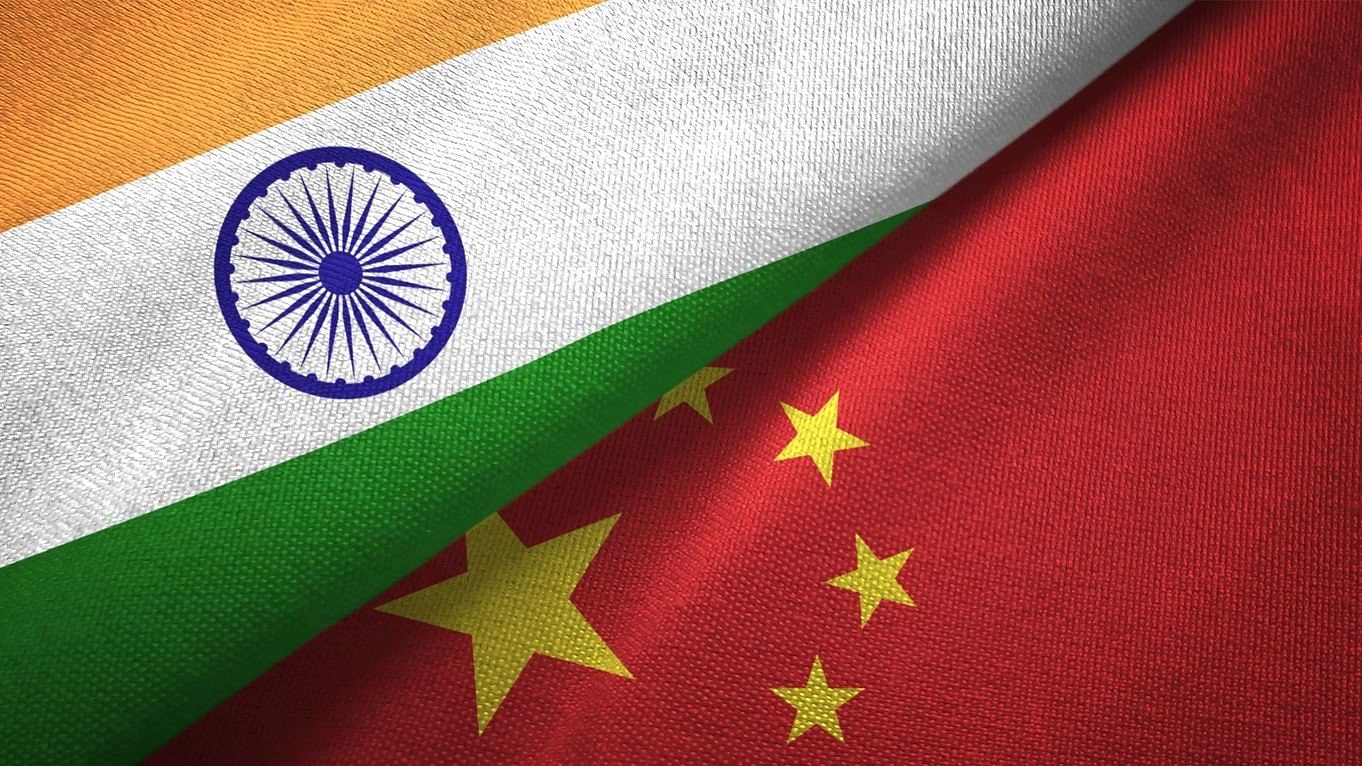
The flags of India and China.
Credit: iStock Photo
India’s economic policy towards China is currently in a state of confusion and needs significant reconsideration from the new government. What explains this state of affairs?
In the wake of the 2020 Galwan Valley face-off, the government banned Chinese apps owing to data privacy and security concerns, and implemented stricter controls on Chinese investments. The logic was clear — in the Communist Party-State, State institutions, and public and private enterprises are suborned to the will of the Party and to the goal of sustaining it in power.
The Chinese economic model is, therefore, a mercantilist one with a zero-sum logic despite its constant rhetoric of ‘win-win’. Experiences in Sri Lanka and even in China’s ‘all-weather’ friend Pakistan show exactly how China’s foreign economic interventions pan out for host nations.
China dependence
This said, India is heavily dependent on China for its own economic growth and technological transformation. This is particularly so in critical sectors such as electronics and telecommunications, pharmaceuticals, and advanced technologies such as electric vehicles (EVs). New Delhi has rolled out policies such as production-linked incentives (PLIs) and continued with stringent anti-dumping duties to protect local industries and promote domestic manufacturing. Yet, dependence has only grown since the end of the pandemic with China taking over again — after a two-year gap — as India’s top trading partner. Of the $118.4 billion in bilateral trade, however, imports constituted $101.7 billion.
Economic policy has, meanwhile, also run up against political and security exigencies. Barely days after the new government was sworn in, came the report that the two government ministries (the Electronics and Information Technology (MEITY) and the Commerce and Industry) were seeking easier visa norms to enable entry of Chinese technicians. Access to these technicians is necessary given the need to get imported Chinese machinery up and running. The delay in issuing visas is the result of two other ministries having their own approaches to China — the Ministry of External Affairs (MEA) as the principal interlocutor on China and the Ministry of Home Affairs (MHA) with its responsibility for internal security.
More than turf battles
This conflict between ministries does not appear to be because of a lack of direction in policymaking. The direction and intent have been clear for all ministries at least since Galwan — that India must compete with and overtake China. It is also difficult to argue that there is a lack of inter-ministerial co-ordination, especially given how powerful the Prime Minister’s Office (PMO) is. The reasons then must lie elsewhere, and several suggest themselves.
One: a powerful PMO also means greater costs for failure. Failures are more consequential in the immediate term for the MEA and the MHA which then use their membership of the Cabinet Committee on Security to prioritise their objectives at the expense of those of other ministries. The appetite for risk within ministries has become extremely limited.
Two: individual ministries possibly lack the requisite expertise to engage in inter-ministerial coordination — one outcome of India’s recruitment of non-specialists through a general civil services examination.
In the first instance, they lack understanding of what other ministries need. For instance, the MEA will not have those well-versed in economic affairs enough to come up with solutions to problems that the commerce ministry faces or to negotiate FTAs, for example.
In the second instance, there is a lack of specialised knowledge on China. The commerce ministry might broadly be aware of some aspects of the Chinese economy — for example, that China subsidises its industries to undercut foreign competition. But it is unlikely that India’s economic policymakers understand clearly as the MEA does, for example, how China’s political system works, and the implications this has for the Chinese economy and its economic actors. China’s Communist Party-State can use or force its citizens to steal IPR or engage in industrial or other espionage as the Americans and Europeans have been discovering in recent years; and hence, India’s visa delays.
In the third instance, individual ministries might lack adequate knowledge of even their supposed areas of competence. Has MEITY, for example, been able to enforce the ban on Chinese apps in India? Do the relevant Indian ministries possess enough knowledge of China’s legal and economic systems to anticipate problems and inform policies? To what purpose are visas delayed indefinitely? Does the MEA have the capacity to run background checks on individual Chinese?’
In a situation of ignorance or a lack of capacity, it is easier for ministries to impose open-ended restrictions on visas or apps or investments in the belief that it reduces the chances of a mishap in their domain, but without thinking about what opportunities might be lost in other domains.
It is easier for the Ministry of Commerce to complain than try to understand the ecosystem the Chinese have created at the central, provincial, and city levels to attract both FDI and cutting-edge technology. It is this reality that explains why Indian imports from China keep rising, and why India has not been able to take advantage of friendshoring.
Even as India must stay the course on an assertive security approach with China — something that is both necessary and viable — it must also take the initiative to recalibrate the economic relationship with China considering the changed geopolitical and international economic circumstances since Galwan.
(This is the first of a two-part series on India’s economic policy towards China. The second part will appear tomorrow)
(The writer is Associate Professor, Dept. of International Relations and
Governance Studies, and Director, Centre of Excellence for Himalayan Studies, Shiv Nadar University, Delhi NCR)